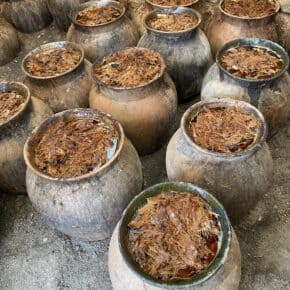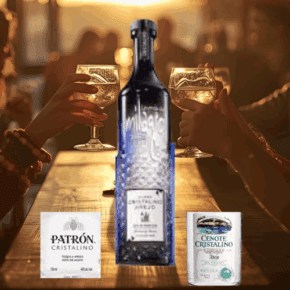Capón can refer to an agave farming practice or the type of mezcal that results from this process. Capón means castrated in Spanish and that’s basically what it means when applied to agave. The agave life cycle is simple: they sprout, mature over years – potentially decades depending on the variety – flower so that they can reproduce, and die.
As agaves are ready to flower they’ll form a bump at the top which is a sign that the quiote is about to start growing up into a flowering stalk. If you let the quiote grow, it will pull up an enormous amount of the plant’s carbs and energy. The entire idea of castrating an agave is to keep all of those carbs in the piña of the agave.
When an agave is fully mature, pulque makers cut into the top and carve out a bowl. This puts the agave’s defense mechanism into action and it starts secreting sap. Pulque makers scoop up that sap daily and ferment it into pulque. The agave keeps producing sap until it dies.
Mezcal makers will do something very similar: They wait for the quiote to start emerging from the top of the agave and cut it off as close as possible to heart of the agave. They’ll wait for a few months until they feel that the agave is at its ripest and then harvest it. Mezcaleros claim that this results in a richer mezcal after distilling. (Although it’s rare, some mezcaleros will let the castrated agave sit in the field for more than a year. In the case of Chacolo, their capón mezcal is made from agave that grew for four years after castration.)
It’s a technique that is widely used as a way to make agaves which would otherwise start flowering at different rates across a field all be ready for harvest simultaneously. Sometimes a farmer will capón an entire field of agave for a specific mezcal. Recently some mezcals call this out explicitly – like Noble Coyote and Rezpiral.












Leave a Comment